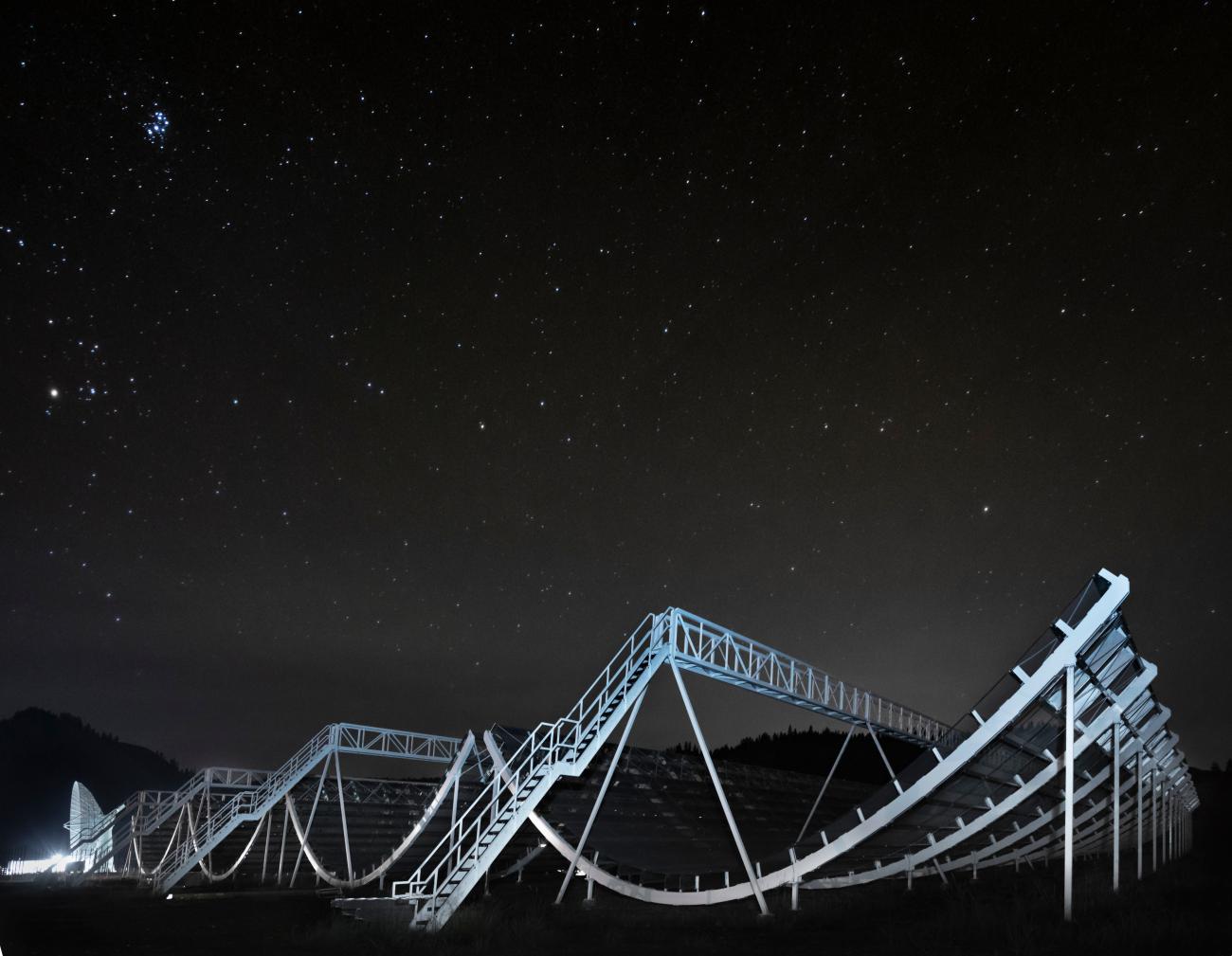
The Big Picture
CHIME
CHIME (The Canadian Hydrogen Intensity Mapping Experiment) is a revolutionary Canadian radio telescope that will help unravel mysteries of the cosmos. It is based at the Dominion Radio Astrophysical Observatory near Penticton, BC, and is led by UBC, McGill University, University of Toronto and the observatory, with collaborating scientists across North America.
“With CHIME we will measure the expansion history of the universe and we expect to improve our understanding of the mysterious dark energy that drives that expansion ever faster. This is a fundamental part of physics that we don’t understand and it’s a deep mystery. This is about understanding how the universe began and what lies ahead.”
~ UBC astrophysicist Mark Halpern, principal investigator, CHIME
Dark Energy
The universe is expanding at an accelerating rate, challenging our understanding of basic physics. Scientists call the entity responsible for this phenomenon “dark energy,” but do not know what it is. To study the properties of dark energy, astrophysicists have built a telescope called CHIME (the Canadian Hydrogen Intensity Mapping Experiment), located in Penticton, BC. CHIME, which has been operating for the past year, has no moving parts but maps cosmic radio signals over the sky visible from Canada every day. It will map the location of hydrogen gas, the most common element in the cosmos, creating a three-dimensional map of the structure of the Universe. Scientists can infer distances by measuring the sizes of these hydrogen structures, and the expansion of the universe from the colour of the light the structures emit. By tracing the structures through cosmic time, scientist will gain a better understanding of how the universe evolved and the role of dark energy.
Fast Radio Bursts
CHIME is also being used to study Fast Radio Bursts – energetic single pulses of radio emission arriving in random directions from unknown sources well beyond our galaxy. Their origin is a major puzzle in high‑energy astrophysics. With its huge field of view and broad frequency coverage, CHIME is a nearly ideal instrument for finding and studying many of these bursts.
“CHIME’s unique design enables us to tackle one of the most puzzling new areas of astrophysics today – Fast Radio Bursts. The origin of these bizarre extragalactic events is presently a mystery, with only a few dozen reported since their discovery a decade ago. CHIME will detect many of these objects every week, providing a massive treasure trove of data that will put Canada at the forefront of this research.”
~ Astrophysicist Victoria Kaspi (McGill University), DSc’18 (UBC), lead investigator for Fast Radio Bursts project
Pulsars
The telescope will also monitor radio waves from pulsars, or neutron stars. In our galaxy, neutron stars spin, and the radio waves they emit pierce the sky like the beam from a lighthouse. The waves are observed as regular and repetitive pulses and are being used as cosmic clocks to gain insight into other phenomena. For example, the information will aid in the search for gravitational waves – travelling ripples in space‑time – passing through our galaxy. It will also lead to new insights into the structure and magnetic fields of neutron stars, and enable other tests of Einstein’s theory of general relativity.
Facts about CHIME
-
Seven quadrillion computer operations occur every second on CHIME. This rate is equivalent to every person on Earth performing one million multiplication problems every second.
-
The radio signal from the universe is very weak and extreme sensitivity is needed to detect it. The amount of energy collected by CHIME in one year is equivalent to the amount of energy gained by a paper clip falling off a desk to the floor.
-
CHIME collects radio waves with wavelengths between 37 and 75 centimetres, similar to the wavelength used by cell phones.
-
The CHIME telescope incorporates four 100-metre long U-shaped cylinders of metal mesh that resemble snowboard half-pipes. Its overall footprint is the size of five NHL hockey rinks.
-
Most of the signals collected by CHIME come from our Milky Way galaxy, but a tiny fraction of these signals started on their way when the universe was between 6 and 11 billion years old.
-
The data rate passing through CHIME is comparable to all the data in the world’s mobile networks. There is so much data that it cannot all be saved to disk. It must first be processed and compressed by a factor of 100,000.





























